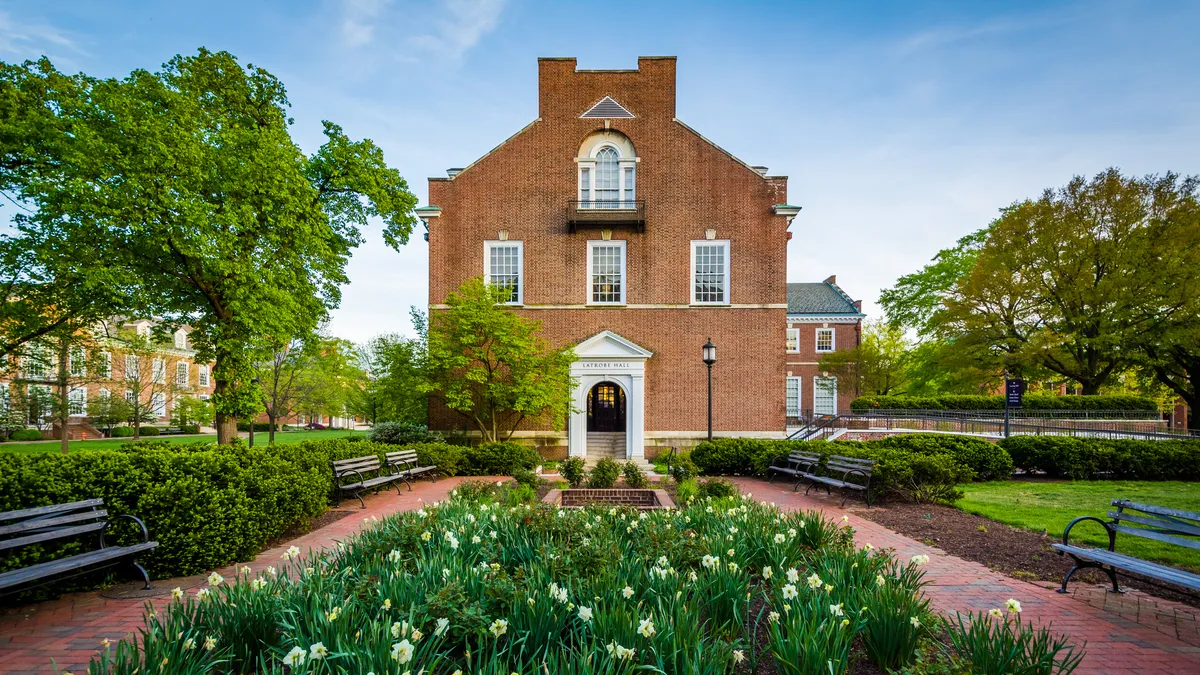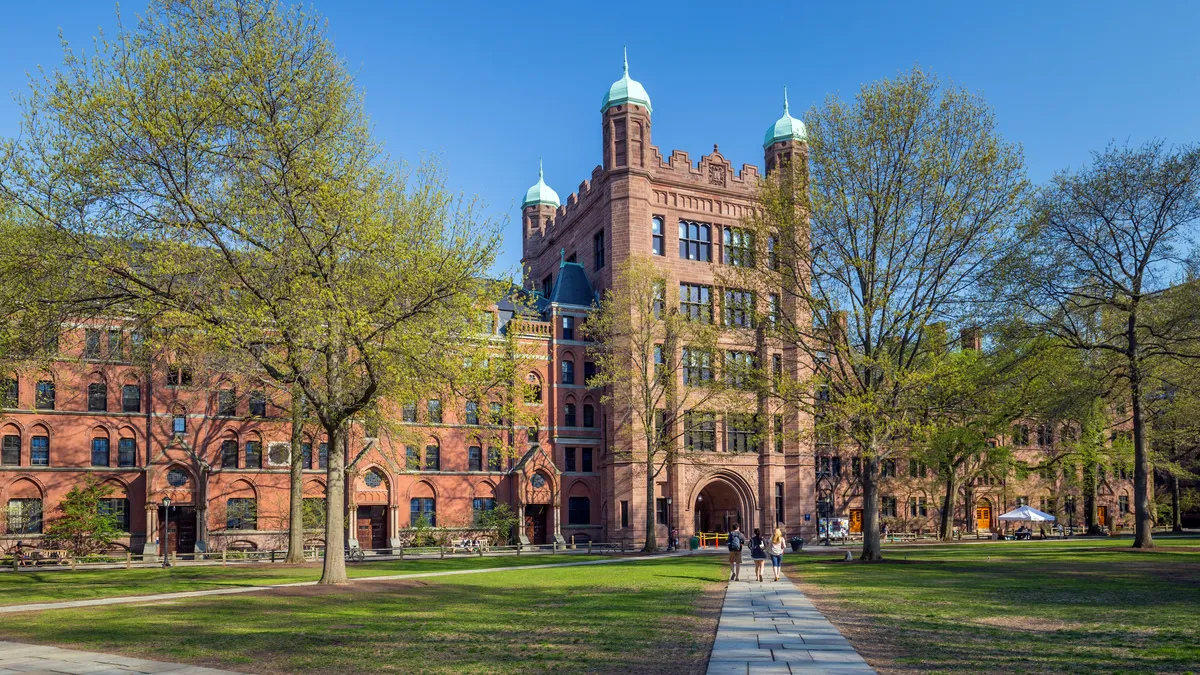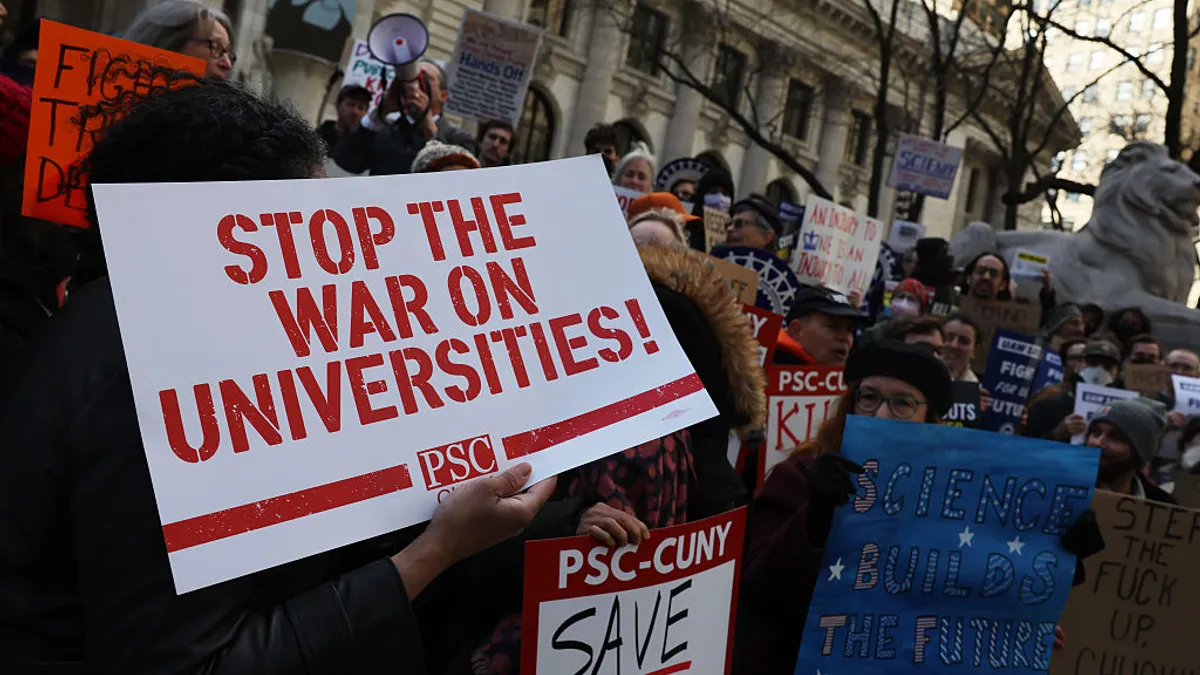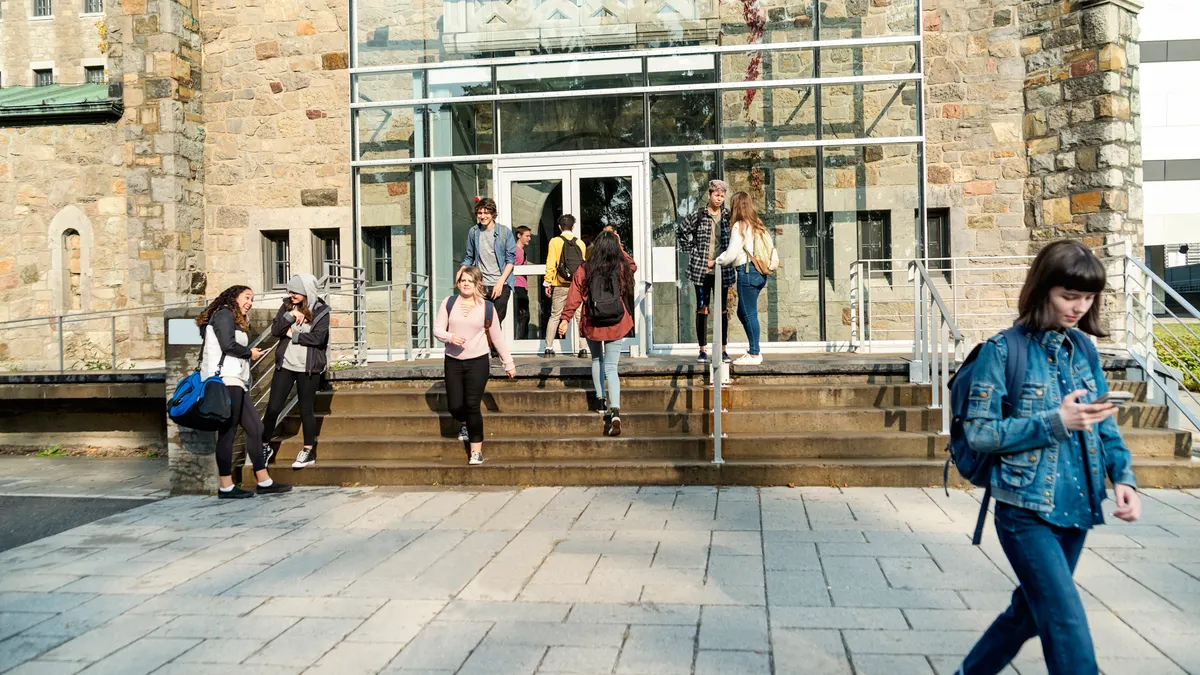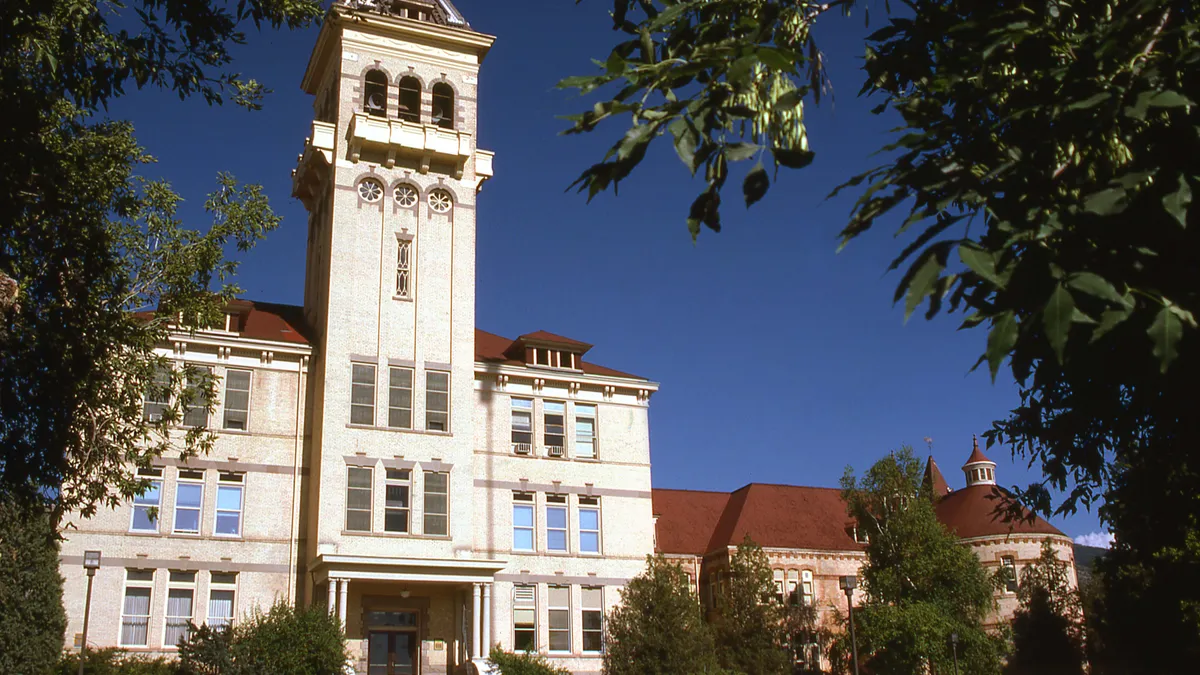In the late 1950s, the founders of Texas Instruments, Inc. found themselves frustrated by a dearth of qualified individuals in the Dallas-Ft. Worth area who had advanced training in engineering and the physical sciences; the universities in the region were simply not turning out enough graduates in these fields to meet the company’s demand, and Texas Instruments was having to recruit from outside of the state to close the gaps.
“You have this tale of two cities” in Dallas, said Dallas County Community College District Chancellor Joe May. On the one hand, there’s a city that is benefiting from “a booming economy with incredible economic growth with jobs being created — literally 335 jobs a day being created.” But on the other hand, there’s a city that has the highest child poverty rate in the country and sees a great portion of its population being boxed out of that economic vitality.
With this in mind, the founders of Texas Instruments took it upon themselves to launch what is now the University of Texas at Dallas to help bridge that gap.
Today, Texas Instruments joins more than 50 partners from tech and business in Dallas — “from a Who’s Who of corporations in Dallas to small companies,” according to Dallas Independent School District Superintendent Michael Hinojosa — who are joining forces with the district and local colleges to ensure today’s students are prepared to succeed in tomorrow’s workforce.
“The mayor keeps talking about there’s all these jobs that go unfulfilled in Dallas, and that’s because” the schools weren’t preparing the students to meet the demands, Hinojosa said. As such, the formation of many of the partnerships, much like the creation of UT Dallas, have been largely driven by the companies that call the Dallas-Ft. Worth area home.
“This has been beyond my wildest dreams how successful this has become, and we kind of stumbled into it,” said Hinojosa of the partnerships unfolding between the district, industry and local colleges and universities. “I’ve never seen anything like it in my 23 years as superintendent, the way this came together.”
For example, he said, the college academies, or P-Techs as they’re called, were born out of an idea pitched by executives from American Airlines, which is headquartered in Dallas, who “were very frustrated they were having to go all over the world to hire a diverse workforce.”
One of the executives “came to us and asked if he could lease one of our buildings … to start a training program for 19-, 20-, 21-year-olds” to teach them the skills needed to work at the company, Hinojosa said. The district ultimately decided they wanted to be involved in the efforts, but since they don’t serve 19-to-21-year-olds, they knew they’d need some help from the local community college district.
Hinojosa recalled that May “says we always mess up in the hand-off,” said Hinojosa, “so what these collegiate academies, these P-Techs, have done is minimize the opportunities to fumble the handoff.”
“Every time we remove friction between systems, it increases the likelihood that people will be successful,” said May. “Most people aren’t lost or drop out because of the content; they drop off because of poor handoffs in the system and a lack of clarity about what needs to happen.”
So, said May, what the system is trying to do is figure out “how to identify friction, how to identify barriers that are getting in the way.” Part of this he sees as being tied into the partnership with Dallas ISD, but it’s more than that. “We’re bringing in private philanthropy, we’re bringing in transportation [partnerships] and we’re bringing in food, we’re continuing to look at this” holistically, said May, who detailed partnerships between the community college district and the city’s public transit system and local food pantries to care for students’ total needs.
“We’ve now partnered with DART … where we purchase public transportation passes for any student [enrolled] half-time or more [to be able to get around,] not just to school, but to anywhere. We’ve continued that, realizing that while in high school, many students were receiving meals, but when they come to college, that’s not something we provide,” May said, adding they’ve worked on “bringing mobile food pantries to our campus as well.”
Leveling the playing field
University of North Texas at Dallas President Bob Mong said his institution signed on as the only four-year partner, joining the Dallas County Community College District to invest in the pipeline because “if you look at it from a national perspective and you look at a few years ago, lines crossed and a majority of public school students are [now] eligible for free or reduced lunch. That’s a pretty seismic difference … so we felt at our school that we should really focus on that population that received free and reduced lunch. That was our mission, to serve a historically underserved area,” said May, who added that the university was originally established in Southern Dallas by the legislators.
“We want to get better and better at serving those students,” he said. “Our strategic initiative is really for the university to be a pathway of social mobility for our students … because most of our students come from the bottom economic third or below … most of them are first-generation students. And so the [Dallas Independent School District] covers much of our tier one recruitment area.”
One of the things about the multi-tiered partnership that stands out is it places competitive, sought-after programs in schools and neighborhoods that would traditionally be overlooked in other places.
“We’ve got kids going to tough neighborhoods and they’re not afraid, because they’ve got something great going for them,” said Hinojosa.
In other places around the country, top students from “bad” neighborhoods and schools would be bussed out to top programs, which means there is no success modeling for students who aren't seen as top students, and there is a reinforcement of the deficit narrative these students face daily. In Dallas, however, the message is clear: All students in all neighborhoods deserve access to quality schools.
“We’ve always had competition from private schools, and the big challenge is charter schools are recruiting our kids, and if you don’t give them something they want, you’re going to lose them,” said Hinojosa.
As an added benefit for the schools, “American Airlines decided to put their own equipment into El Centro [College, one of the partnering community colleges] to train” students on the technology they’d actually be using in the field.
And the entrance criteria for the career academies isn’t based on test scores, but interviews. The main thing school leaders are looking to ascertain: “Do you want this, or does your mom want this” for you?
“We don’t cream the best students,” said May, emphasizing the idea that the early college and P-Tech programs are open to all who want the chance to enter.
For a population of “mostly first-generation, 90% economically disadvantaged students,” the most important thing is to provide an opportunity for the students to better themselves, but it has to be one they’re willing to work for themselves.
“You get smarter through hard work, you learn how to develop resiliency through grit,” Hinojosa said.
However, once students make that decision, they’re set on a pathway that increases their chances of success exponentially.
“The student, the moment they decide to go into high school in the 9th grade, they decide to go to college, it’s not a separate decision,” said May.
“The partnership really happens coming out of the eighth grade. We work with them on the curriculum, we work on a minimum of two business partners that would go into the schools, our faculty get engaged, he said. In ninth grade, there is a heightened focus on reading. In tenth, it’s writing, and in eleventh, it’s mathematics, said May, who described “incredible gains” from this approach, and boasted “97-100% students staying in the program, a 93%-plus graduation rate out of students who quite frankly wouldn’t have been predicted to be that high, and they’re 100% college ready.”
Making it official
Hinojosa says the biggest hindrance for districts looking to arrange similar types of partnerships is a lack of infrastructure.
“We’ll ask people to come in and do stuff, and they’ll show up and we’ll have them make copies and get coffee for people, and that’s not really engagement,” he said.
“In the past,” arrangements were “haphazard and one-off,” Hinojosa continued. In some cases, “someone adopted a school, and that was great,” he said. But there was no follow through.
“The beautiful thing about this is it’s not just a pat on the back or a ‘come when you can’ or a ‘we’d like you to help’ — there’s actually a memorandum of understanding that lines out what everyone is supposed to do, when they’re supposed to come,” he said. “There’s a place for everybody.”
“It’s laid out in a very organized way all over the district,” he said. “Each one of [the partnerships] is unique, but there’s been a niche” each has been able to fill. “Every school has a staff member who’s assigned to make sure they take care of those industry partners,” he said.
And that staffer is an assistant principal-level official whose primary job is managing relationships, not a junior level person or someone who is splitting time between numerous functions.
“By putting some infrastructure and support in it, it’ll help us stay true to the design and the process” and get actual results, Hinojosa said.
Putting students first
May and Mong both emphasized their dedication to working with the students who come out of Dallas ISD, whether or not those students ever end up on one of their respective campuses.
“Part of it is just letting the principals and educators and counselors know that we care about their students. Not enough of them go to college — that’s well-documented,” said Mong. “From their coming their freshman year, we’re involved. We’re on the advisory boards.”
“The idea is that these young people would graduate with an associate degree and then they could go on … obviously, we’d like some of those kids to go here, but … anything that gets kids going to college more, being better positioned for the future, regardless of where they go” is a win for the whole region, Mong said. “They don’t have to come here, they could go somewhere else, but our feeling was that it was an important partnership for us to be involved, whether they end up coming here or not.”
May agreed, saying, “What we realized is if we really put the student at the center of what we’re doing, if we really care about their needs, we really need to put the students first, not the needs of the college first, at the expense of the student.”
“As we look at success, we’re also really focusing on understanding that many of the students are coming to us, we may be the closest college to them, but we may not be the best college for them,” May said.
And so, at the Dallas County Community College District, the idea was to put in place navigators that are “institution agnostic” to “help get the student from where they are to where they need to be,” regardless of where that is, he said.
“We had many, many students that were going to multiple colleges at the same time. What was really interesting about those students is they tended to be very successful. They tended to have good grade point averages, they tended to graduate, they tended to be very successful when they transferred,” he said. And ultimately, the success of those students is the success of the entire region.
As such, the Dallas County Community College District provides scholarships to cover the full cost for the students in the early high school programs, including the cost of course materials, and the cost for those who don’t finish their associate degrees alongside their high school diplomas, either because they weren’t enrolled in a participating school or because they didn’t have all of the credits needed, which May said equals about two-thirds of students in the district.
The Dallas County Promise program, which Mong said is modeled after the Tennessee Promise program and which UNT Dallas was instrumental in helping to push, despite being a four-year institution, “promises any student, not just the early college students, but any student the opportunity to continue their education for free,” May said.
As long as students “commit to college by January of their senior year, complete the FAFSA by March of their senior year, and meet with our mentor-coaches during that senior year, and if they do those three things, we will provide scholarship funds to cover the remaining cost of whatever isn’t covered,” May said.
Mong said beyond institutional mission, the main impetus for the university to intervene on behalf of students who may not ultimately choose to attend UNT Dallas is alignment with the state coordinating board’s 60-30 goal — a benchmark that seeks to get “60% of 25-to-34-year-olds by 2030 to have at least a credential or a bachelor’s degree or associate’s degree” — and it will take a comprehensive effort from every school in the state to get there.



